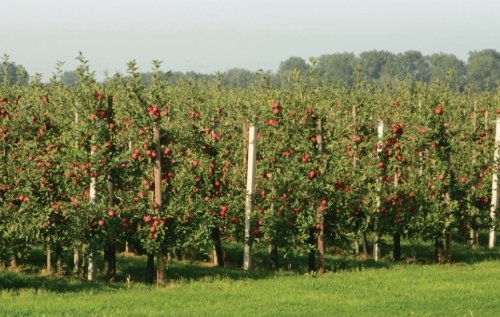Upcoming changes to the maximum residue limit (MRL) in the European Union (EU) for fenoxycarb, the active in one of the pome fruit industry’s valued IPM insecticides, Insegar, should prompt discussion between agronomists and those growers targeting export markets and export agents.
Just to be very clear, there is no change to Australian domestic maximum residue level (MRLs)or withholding periods (WHPs).
Insegar insect growth regulator from Syngenta continues to provide valuable, IPM friendly, targeted control of codling moth and light brown apple moth, as part of an integrated management program, as well as suppression on San Jose scale (Queensland, NSW, Victoria, SA, WA and ACT only).
Syngenta viticulture and fruit product lead Scott Mathew said using Syngenta’s own modelling program, utilising all of our global residue data, means we can model withholding periods to meet certain export markets.
For export to the EU, the MRL for fenoxycarb is expected to default to 0.01 mg/kg this month.
Rather than a two-week WHP, growers will need to observe a 16-week WHP if exporting pears or apples to the EU, when using INSEGAR insect growth regulator.
The label for Insegar insect growth regulator provides a registration for codling moth and light brown apple moth.
"You should start applications seven to 10 days after full petal fall, making three applications at seven-day intervals at the 20 g/100 L rate.
“You should then make a further application seven days later at the 40 g/100 L rate, with any subsequent applications at the 40 g/100 L rate at four-to-six-week intervals depending on moth activity,” Mr Mathew said.
Pheromone traps and codling moth modelling may assist in getting the application timing right. However, the subsequent applications of Insegar insect growth regulator should be assessed in-line with the intended export destination of your fruit.
“Depending on numerous factors including the length of the growing season, and insect pest pressure, it’s important for agronomists and growers to work together to determine their plan of management for codling moth and light brown apple moth, among other pests.
“If exporting apples or pears to the EU, it’s most important that the 16-week WHP be observed to meet those market requirements when using Insegar,” he said.
These changes are not based on consumer risk but expiry of the active ingredient registration in the EU.
For more information on INSEGAR insect growth regulator, speak with your local Syngenta representative.




